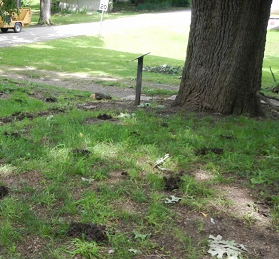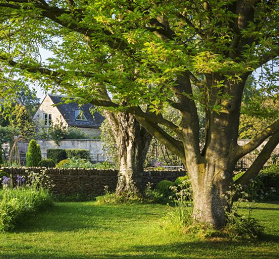Managing Turf in the Shade
Managing turf in shaded environments is one of the most persistent challenges faced by landscape and lawn care professionals. Reduced light intensity and duration directly limit photosynthesis, carbohydrate production, and recovery potential. Without proper management, turf in shaded areas becomes thin, weak, and more vulnerable to disease, drought, and weed encroachment.
Assess the Light Environment

The first step in successful shade management is evaluating light availability. Turfgrass requires a minimum of four hours of direct sunlight or six hours of filtered light each day to sustain vigor. Anything less will eventually weaken the stand. Identify the type and extent of shade—whether it’s from buildings, trees, or fences—and note how it shifts throughout the day and season.
In tree-shaded areas, consider selective pruning or canopy thinning to increase light penetration and air movement. This improves not only photosynthetic potential but also reduces humidity and disease pressure.
Adjust Cultural Practices
Cultural practices must be adapted to match the limitations of shaded turf. Raising the mowing height increases leaf surface area, allowing plants to capture more available light. Avoid scalping or aggressive mowing in these zones—turf recovery is slower under shade stress.
Because tree roots compete heavily for water and nutrients, shaded turf often needs slightly higher irrigation frequency and targeted fertility management. Avoid excessive nitrogen, which promotes weak, elongated growth that further reduces light penetration and increases disease susceptibility. Balanced fertility and well-timed micronutrients strengthen plant structure and root development.
Choose the Right Turf Species and Cultivars

Not all grasses perform equally in low-light conditions. Fine fescues, such as creeping red, chewings, and hard fescue, exhibit excellent shade tolerance and low nutrient demand. Tall fescues are also a solid choice in partial-shade environments due to their deep root systems and adaptability. When seeding or renovating shaded turf, use shade-tolerant blends or mixtures designed for professional applications. These combinations optimize performance across variable light and moisture conditions, improving stand uniformity and longevity.
Manage Expectations and Maintenance
Even under the best management, shaded turf will never perform identically to turf in full sun. The goal is to maintain acceptable quality and density, not perfection. Regular monitoring, canopy management, and adjusted mowing and fertility schedules will help sustain turf performance and reduce the need for frequent reseeding or renovation.
Key Takeaway:
Managing turf in shaded environments requires a balance of science, observation, and practical adjustment. By understanding the light limitations, selecting the right turfgrass, and refining cultural practices, landscape professionals can deliver healthy, visually appealing turf where sunlight is limited—and sustain long-term client satisfaction.